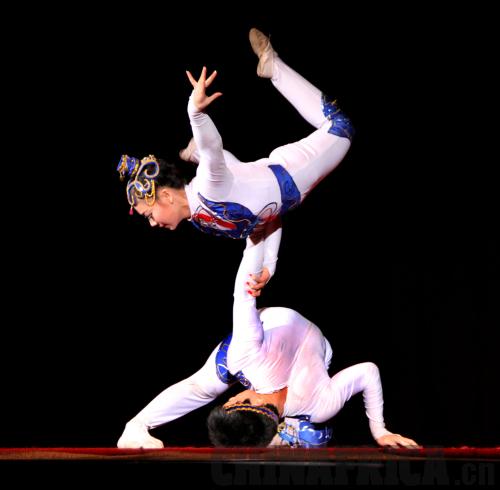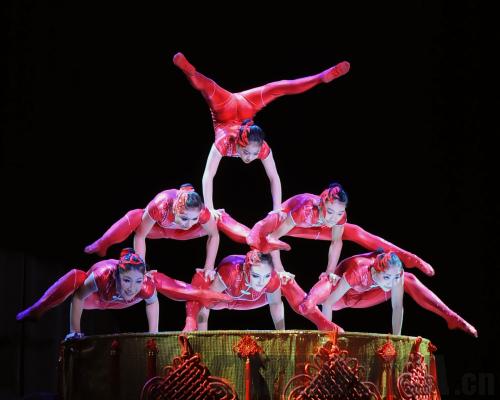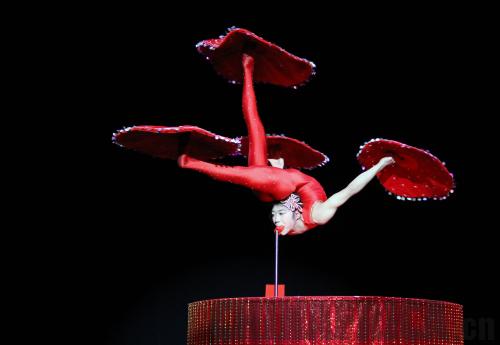| 
In every corner of the world, young people ride their bicycles hands-free, small children fearlessly climb onto the shoulders of adults or walk on top of walls, scaling the dangerously narrow strips. All of these acts show an acrobatic tendency in human nature.
With a history of over 3,600 years, Chinese acrobatics are unique in the world of acrobatic art because of their high-flying and traditional features. Chinese acrobatic performances are often inspired by the life and work skills in daily life. These performances engage audiences with the use of tools like bowls, plates, altar, whips, ropes, ladders, tables, chairs, umbrellas and hats.
Chinese acrobats, with "high, hard, exciting and dangerous" characteristics, frequently win international awards. However, foreign acrobats focus on entertaining audiences, whereas Chinese acrobats are accustomed to more serious performances.
As a growing number of Chinese acrobatics ventured to embrace the commercial world, the world of Chinese acrobatics began to accept new ideas.
"Although acrobatics is traditional art in China, it doesn't cling to tradition as much as Peking Opera and Kunqu Opera, but tends to be influenced by other arts like music, dance, drama, film or TV programs," said Sun Lili, Deputy General Manager of China National Acrobatic Troupe Co. Ltd. "Nowadays, you can see wushu or ballet elements in acrobatics, and the world's most advanced lighting and audio technologies. It's more entertaining than before."
According to Lin Jian, former Vice President of the Chinese Acrobats Association, the new trend of Chinese acrobatics integrates different acrobatic skills and incorporates both traditional and modern styles.
Many foreigners are very fond of Chinese acrobatics. Ning Genfu, Vice President of the Chinese Acrobats Association, said, "Foreigners are looking for Chinese culture in acrobatics. It can be a way for them to learn about China. They are interested in Chinese traditional arts."

As an important way to communicate with the rest of the world, Chinese acrobatics art not only keeps extending its reach, but also attracts more and more foreigners to China. Wuqiao County in Hebei Province is known as the cradle of acrobatics. Over recent years, China Wuqiao International Circus Festival has become an important event for Chinese acrobats. The festival is held every two years, and never fails to attract acrobatics fans from China and the rest of the world. It has grown quickly to become one of the world's three international circus festivals.
Taking acrobatics as its pillar industries, Wuqiao is also famous for acrobatics education. People can usually find many foreign students here.
"I really love acrobatic art," said Yeneneh Tesfaye, a student from Ethiopia. "I come to Wuqiao because this is the birthplace of Chinese acrobatics, and there are many acrobatic skills that cannot be found in other countries. I want to perform on the international stage after finishing my study here."
There are many foreign students just like Tesfaye. Since 2009, Wuqiao Acrobatic Art School has received international students from Tanzania, Ethiopia, Kenya, the United States, Japan, South Korea and other countries and regions.
Many of them have become renowned acrobats in their own countries; some tour around world's major theaters, and some establish acrobatic troupes and training schools.
With a long history, rich culture and dynamic form, Chinese acrobatic art keeps attracting foreigners who later become ambassadors for cultural exchanges between China and other countries.

|